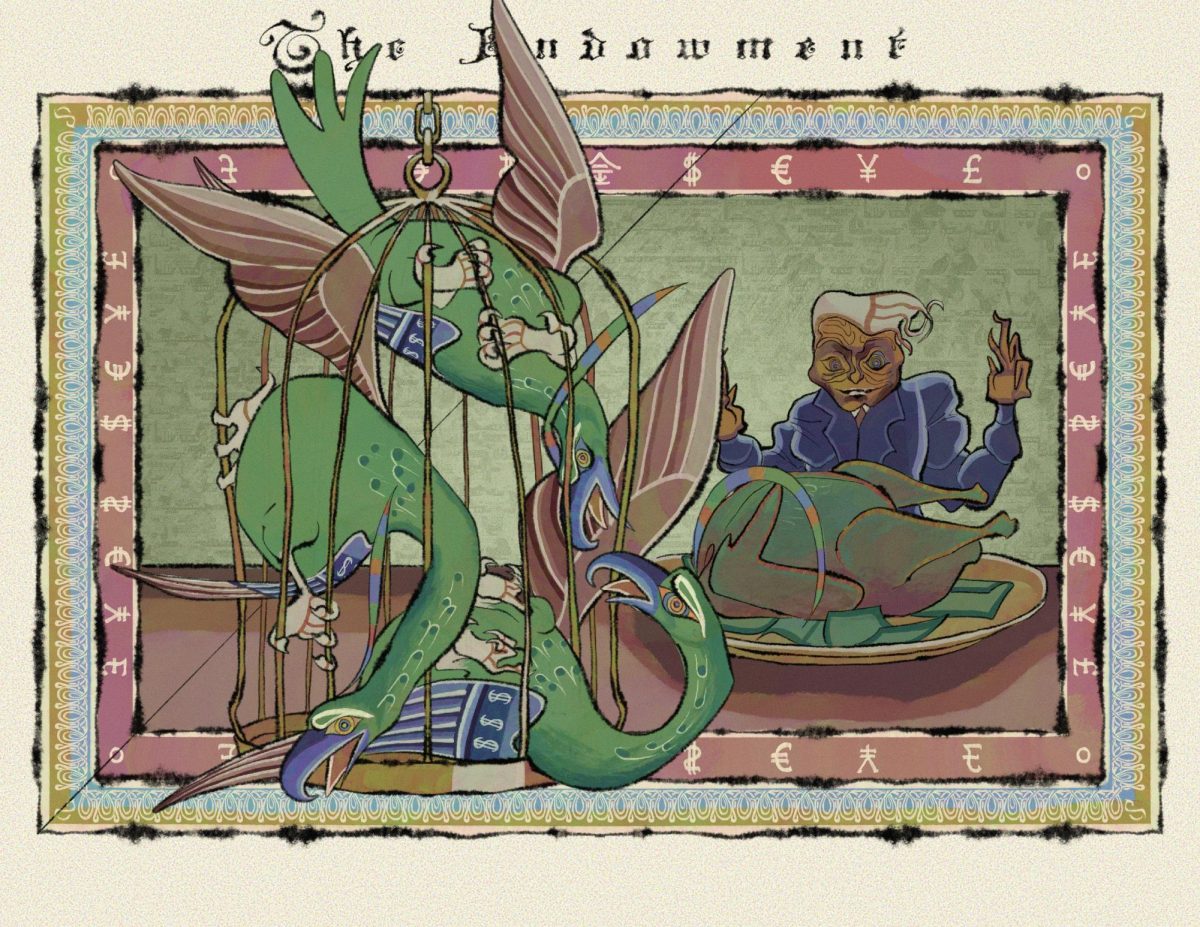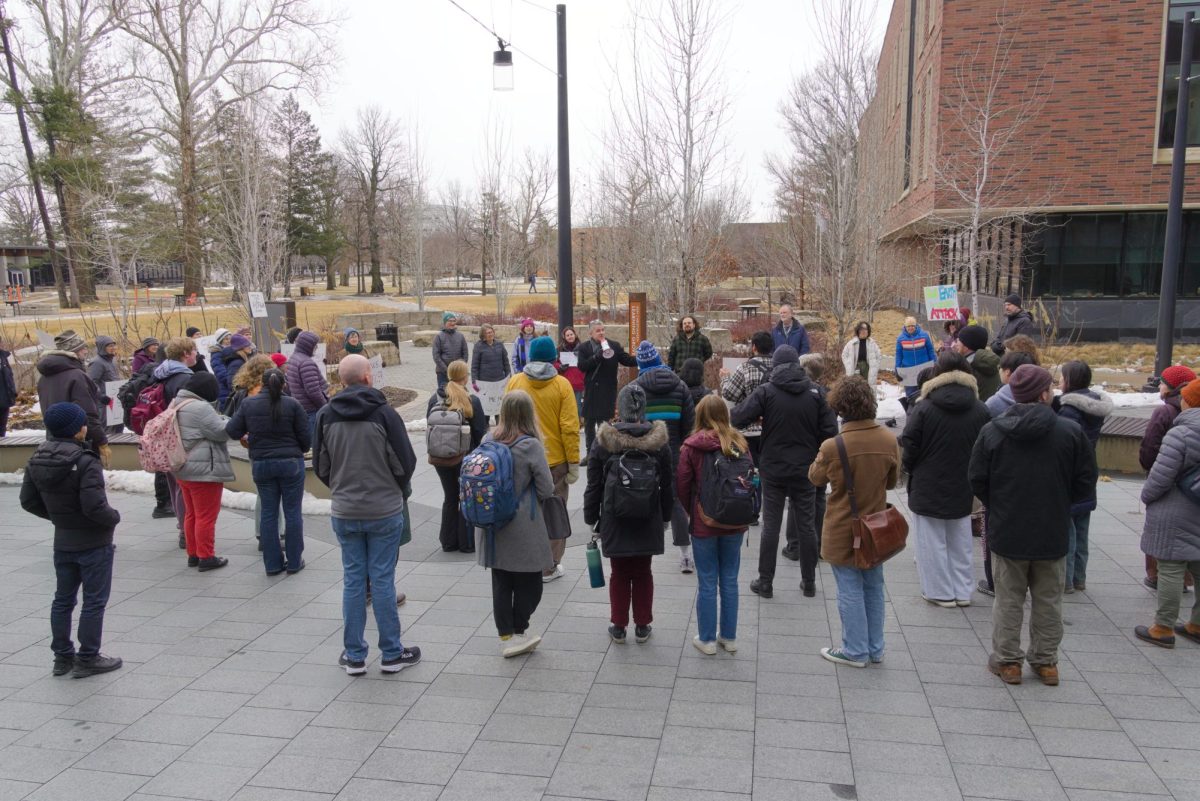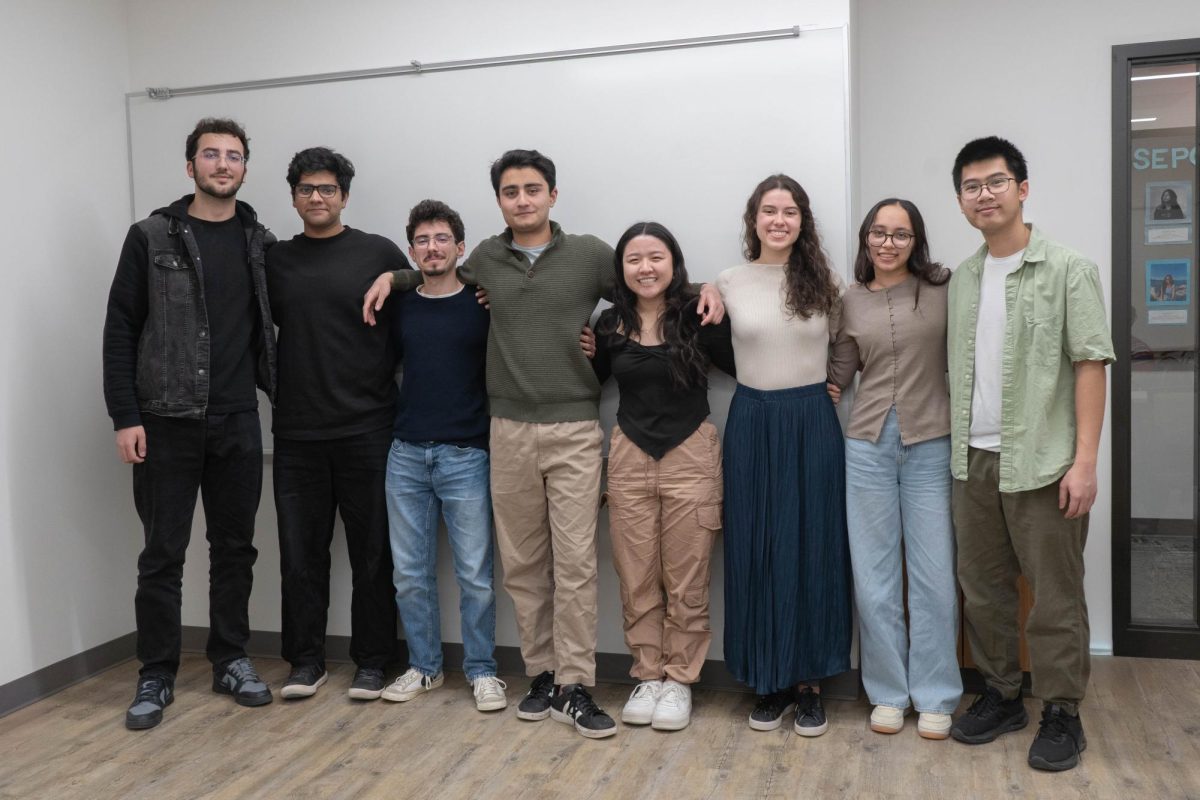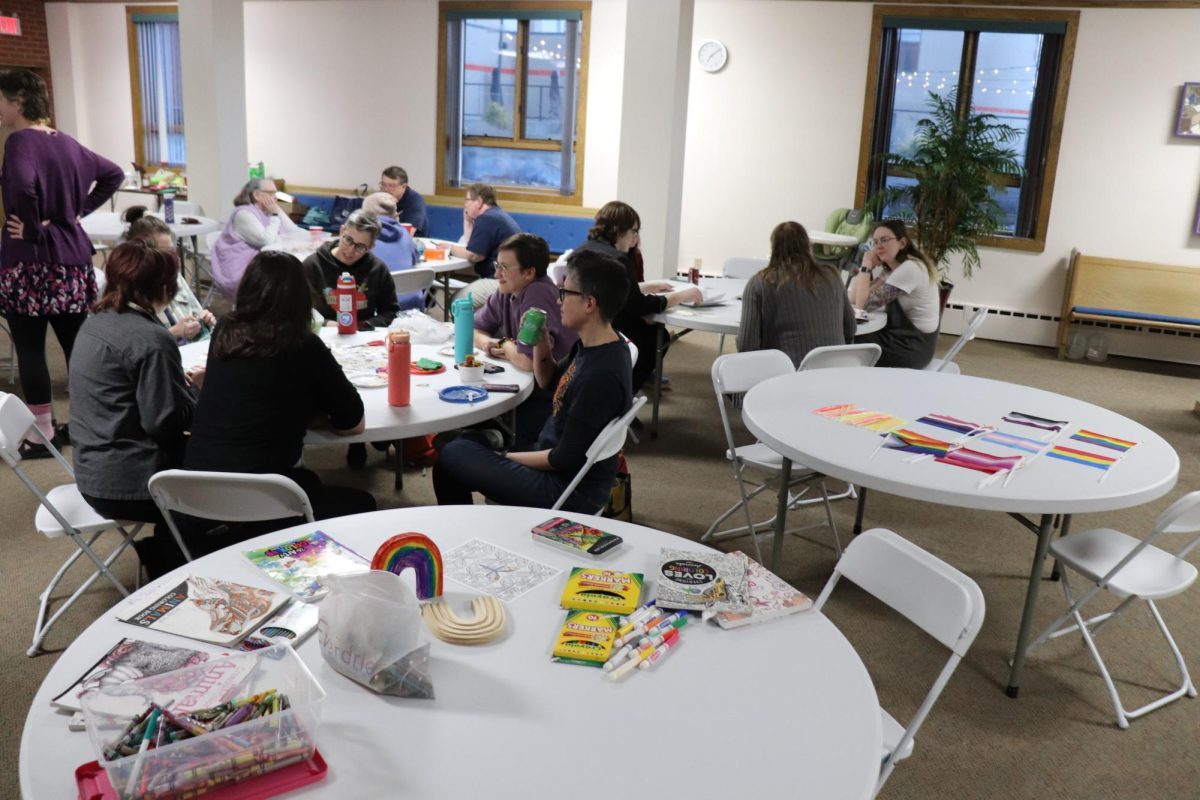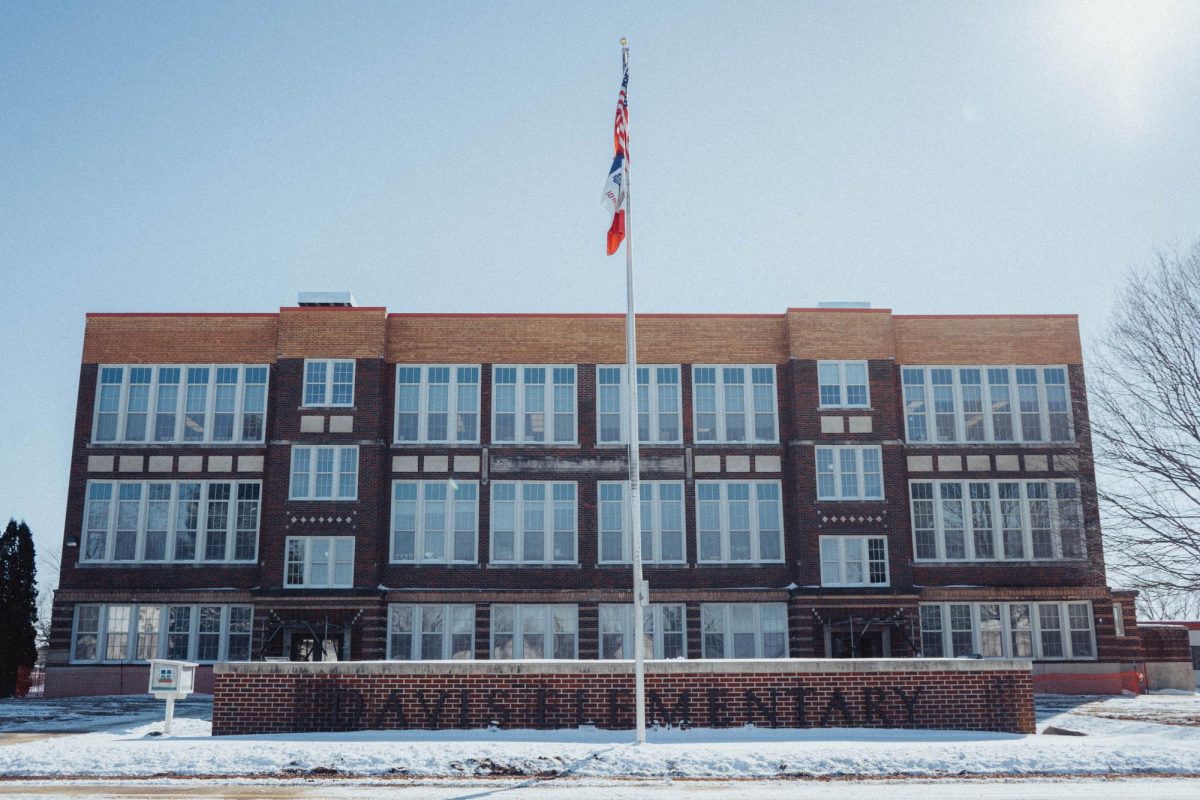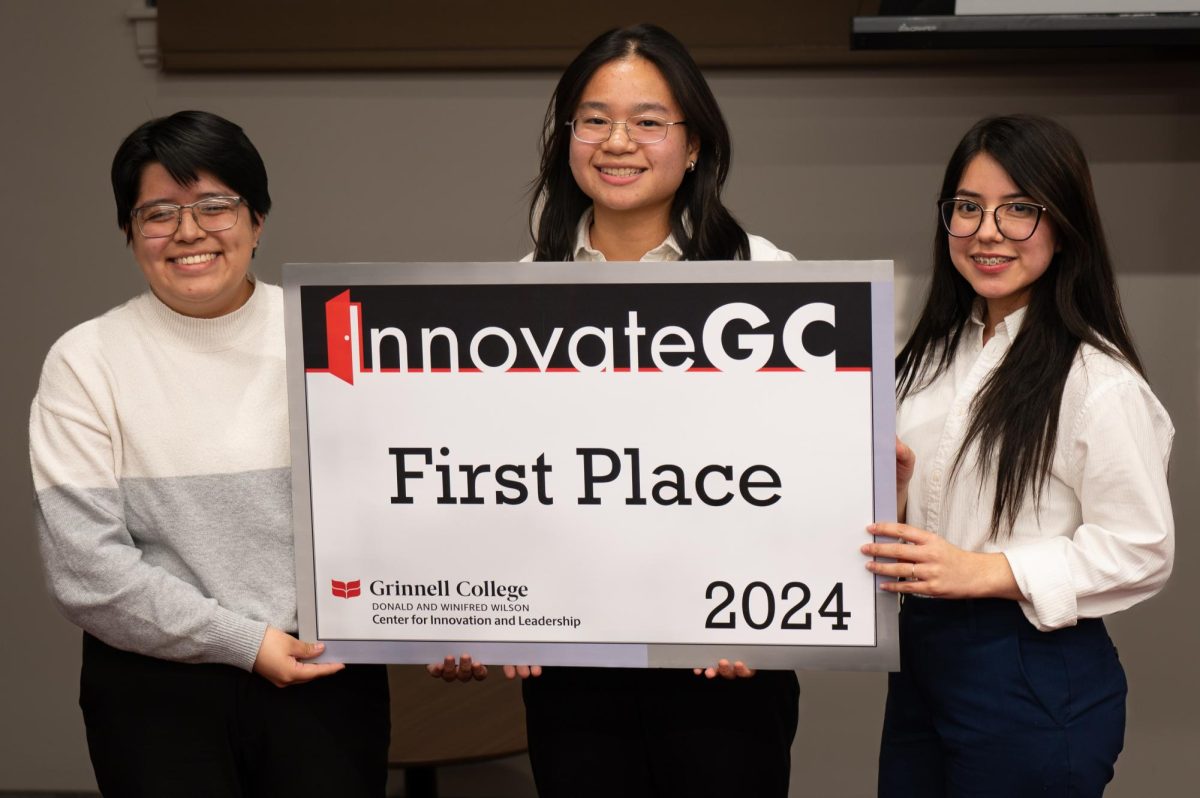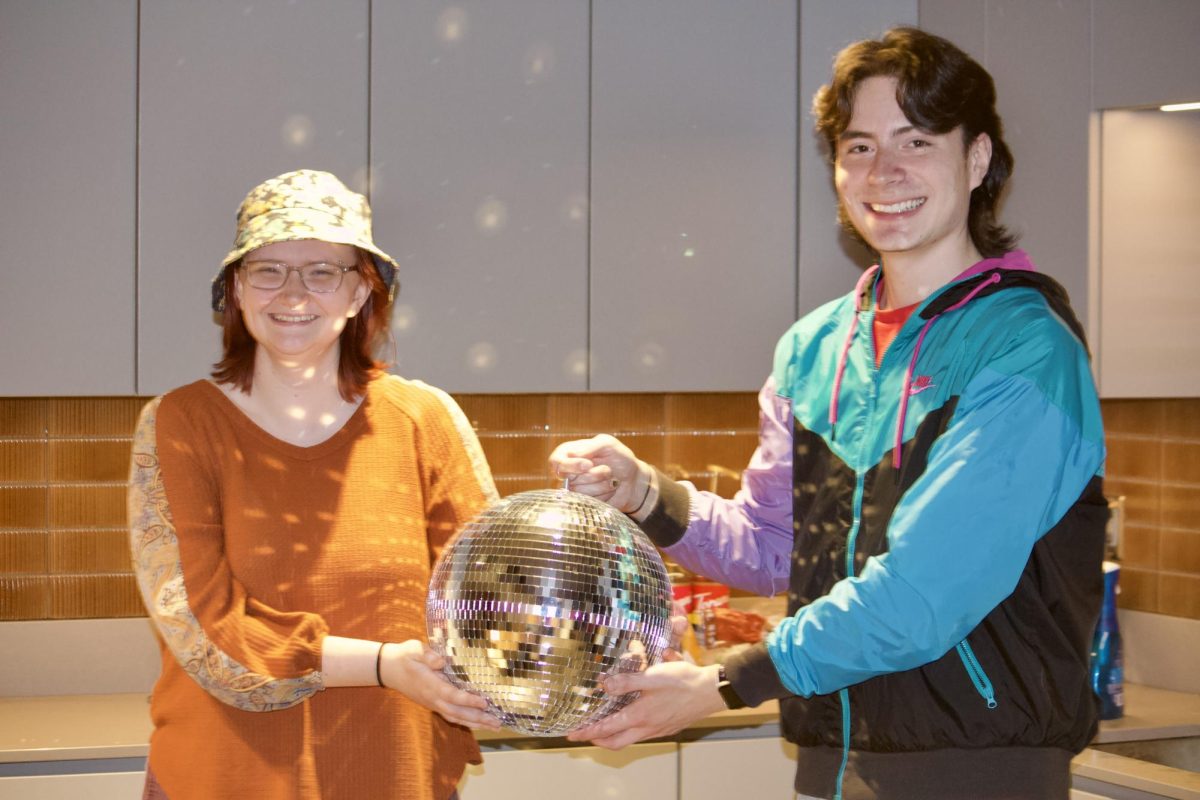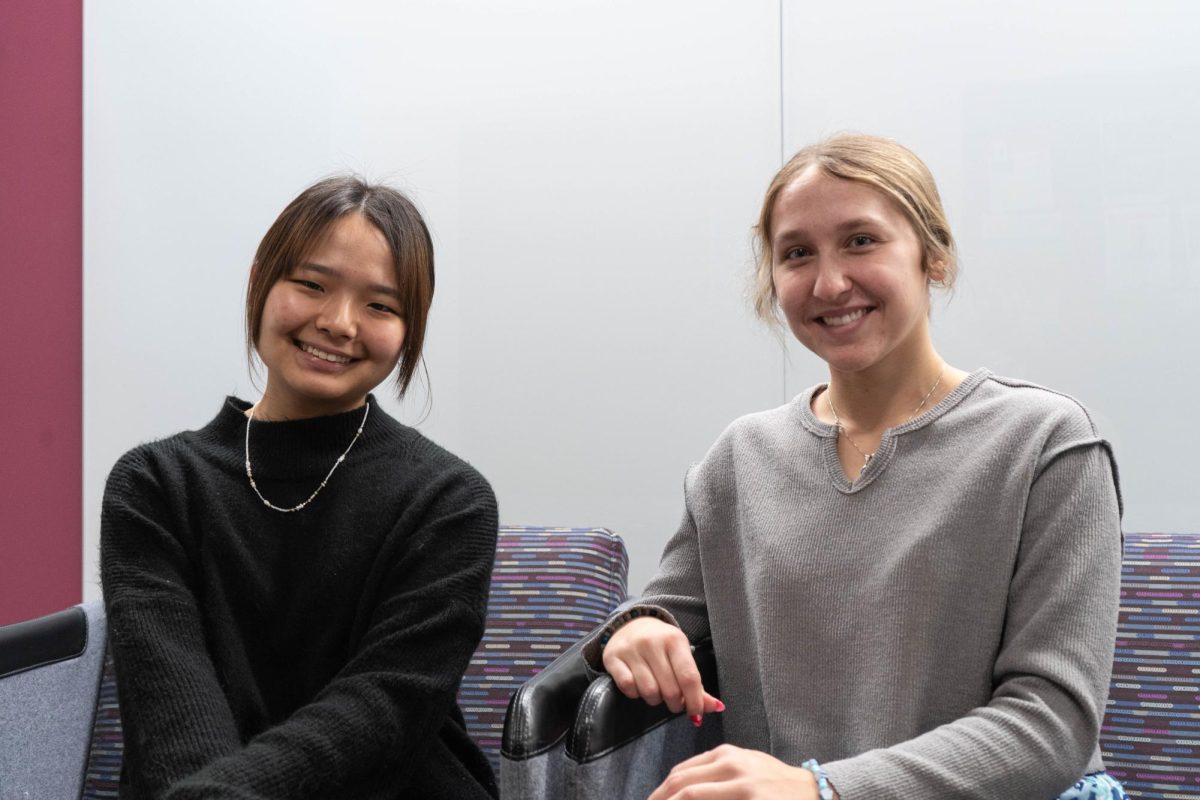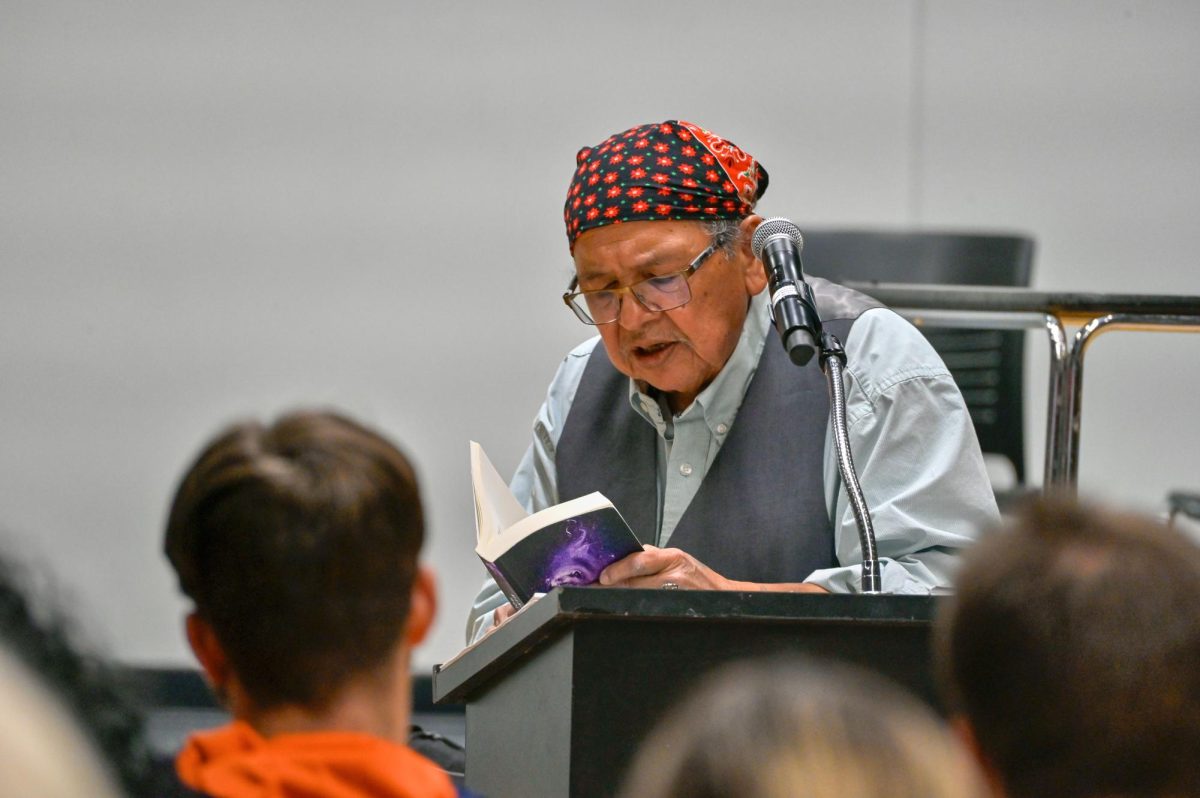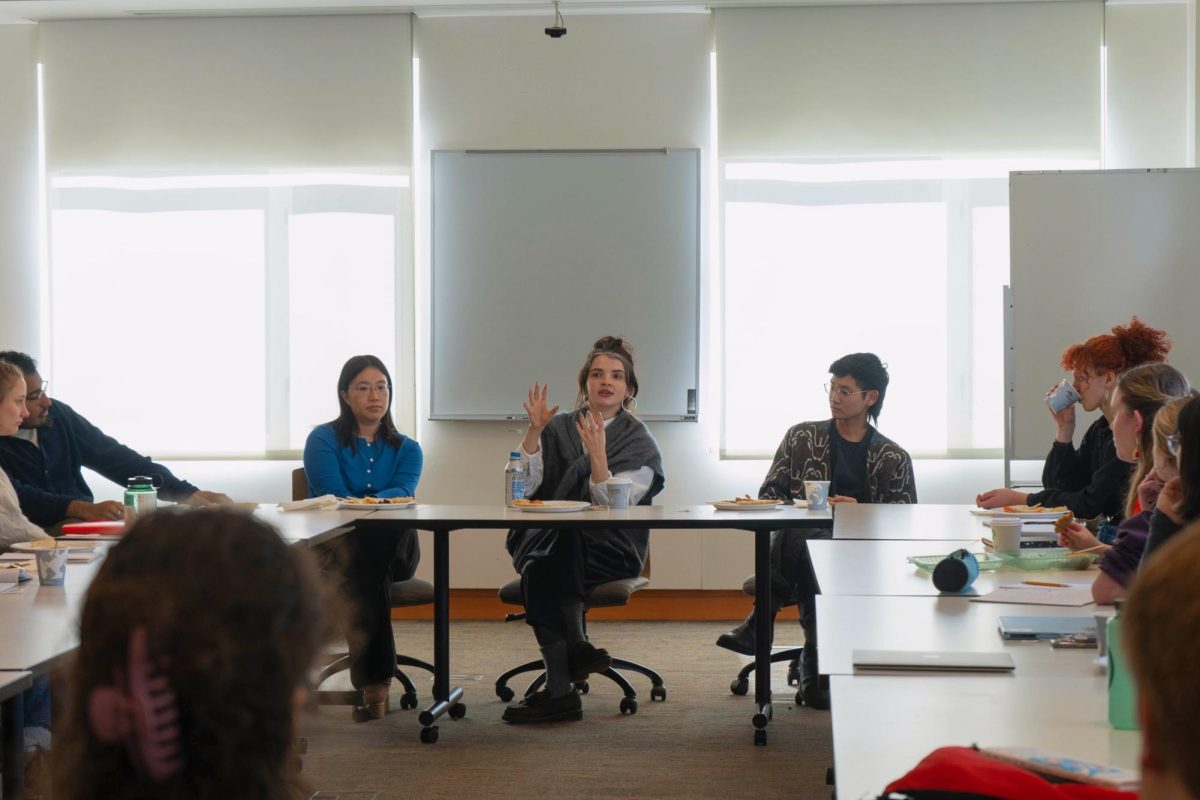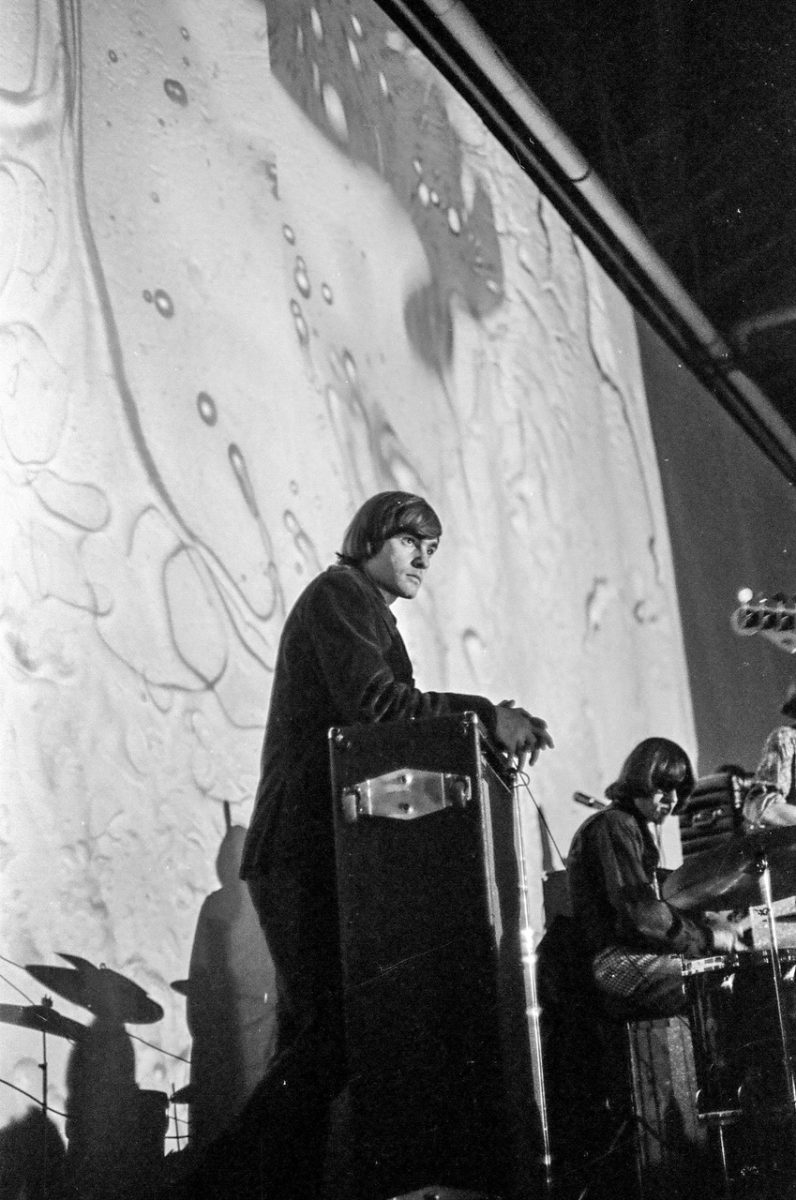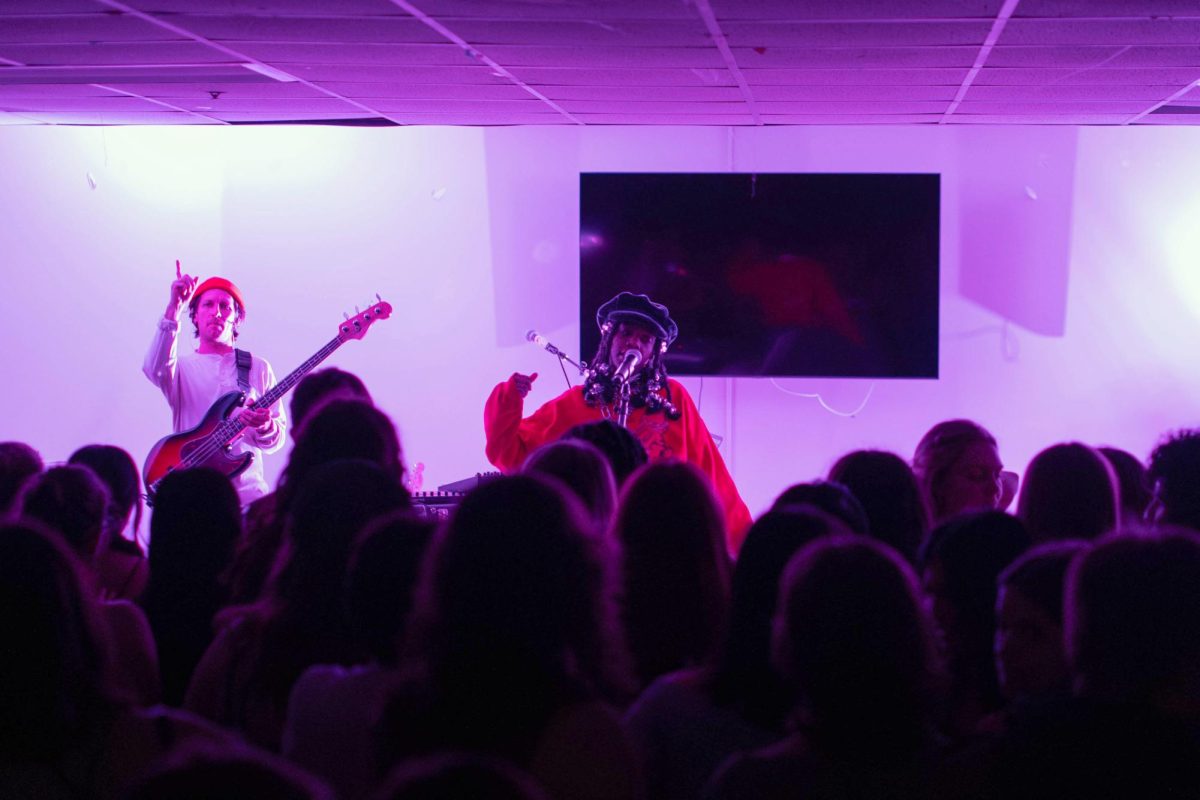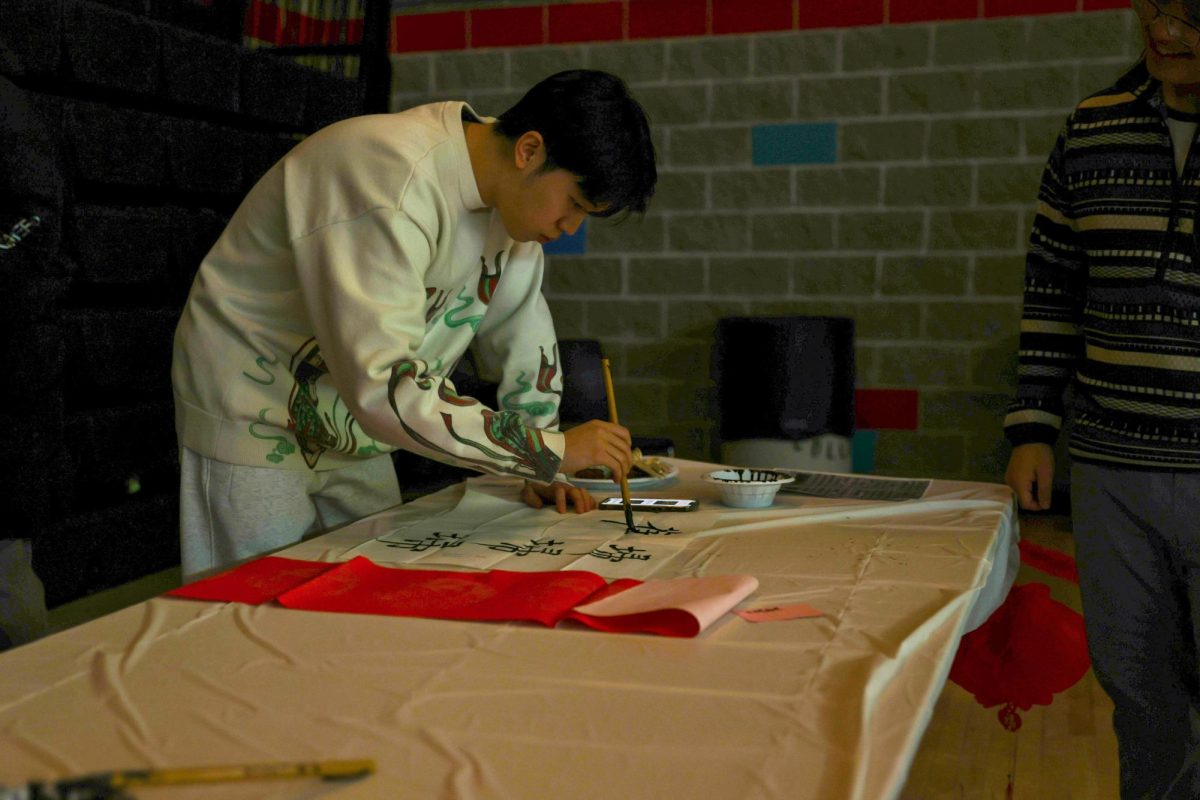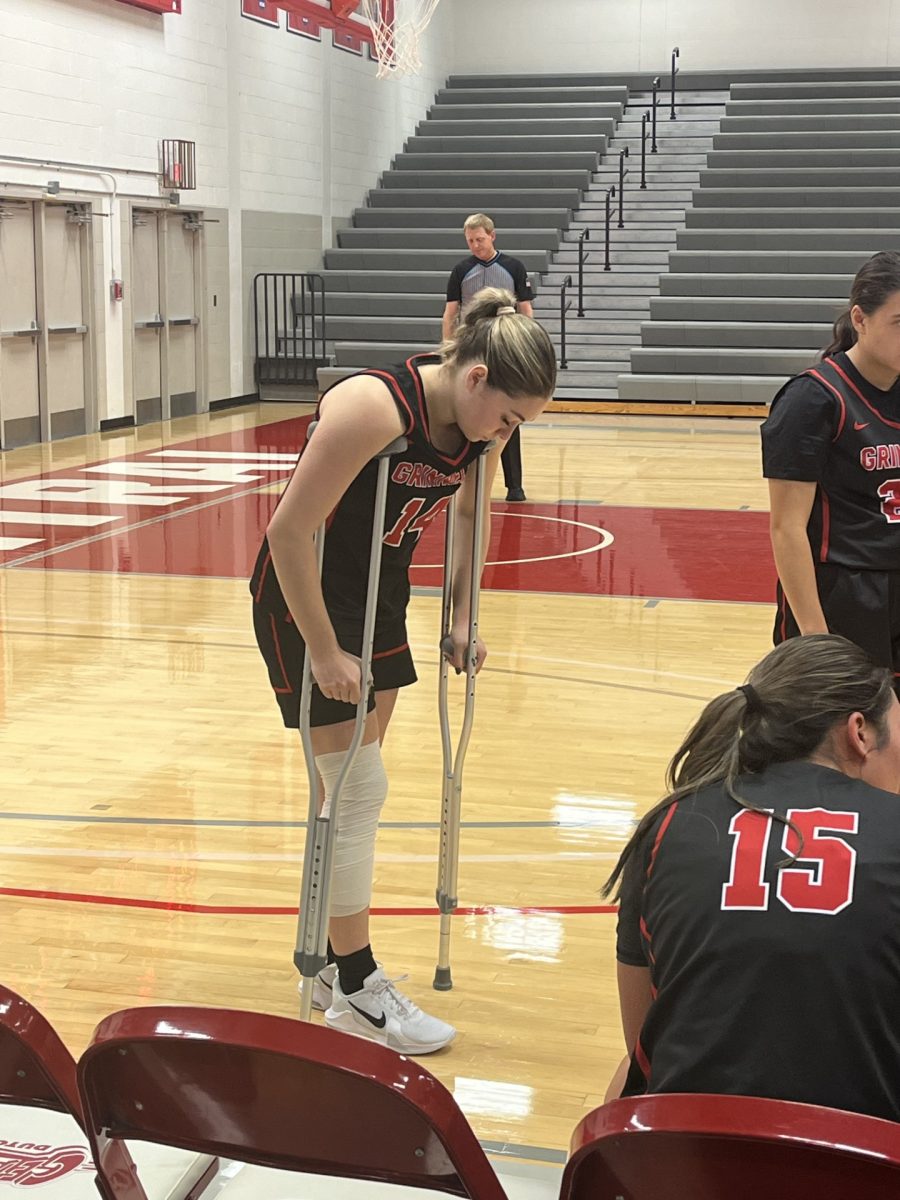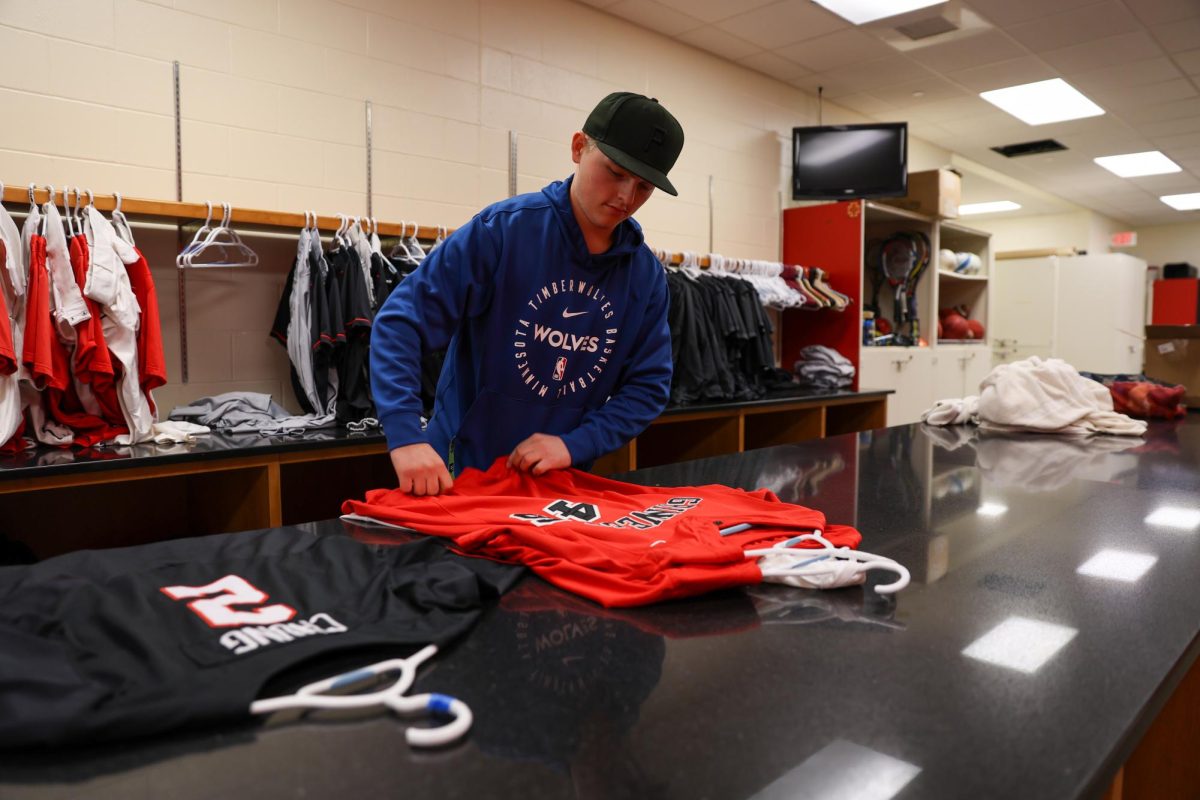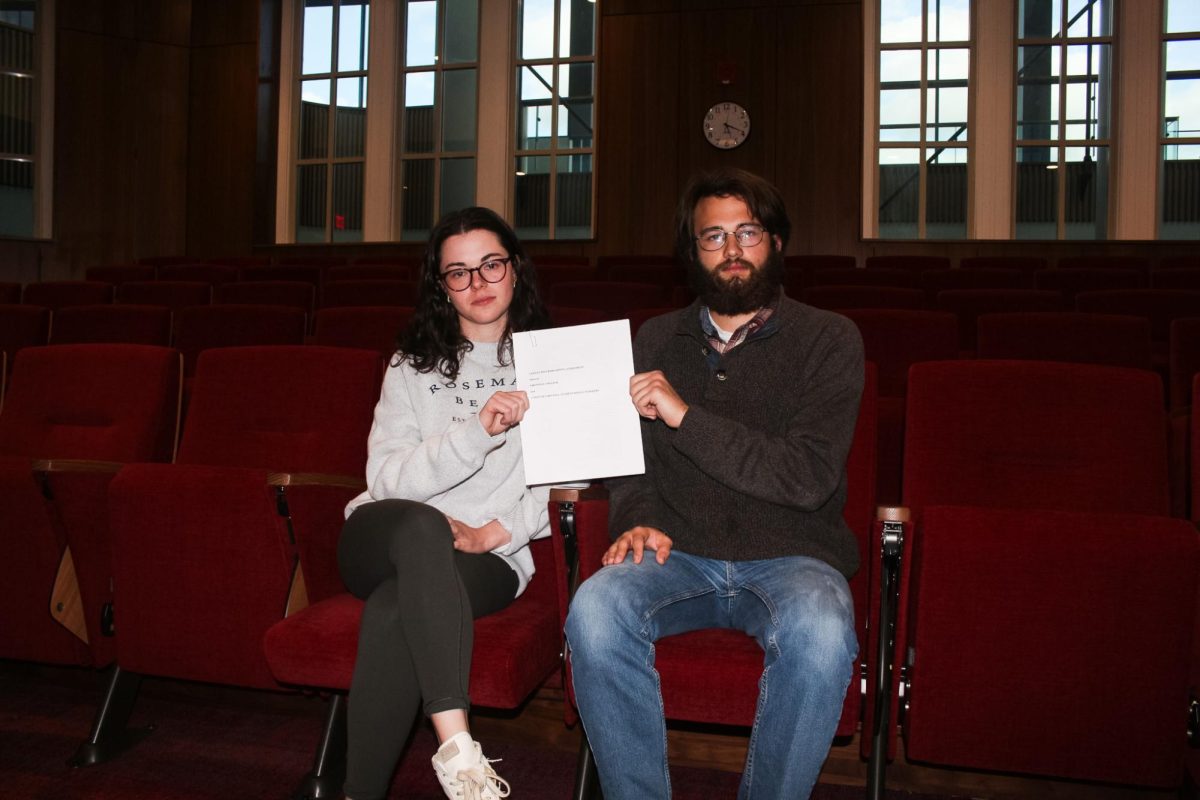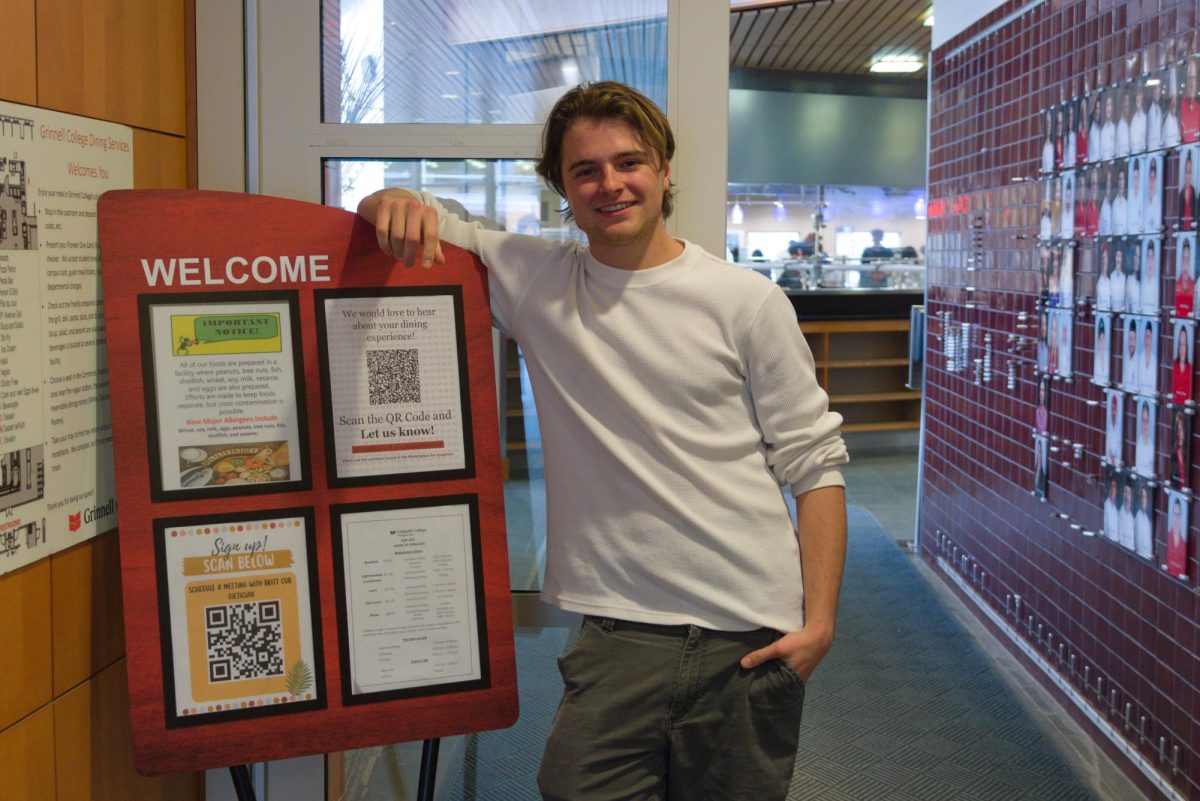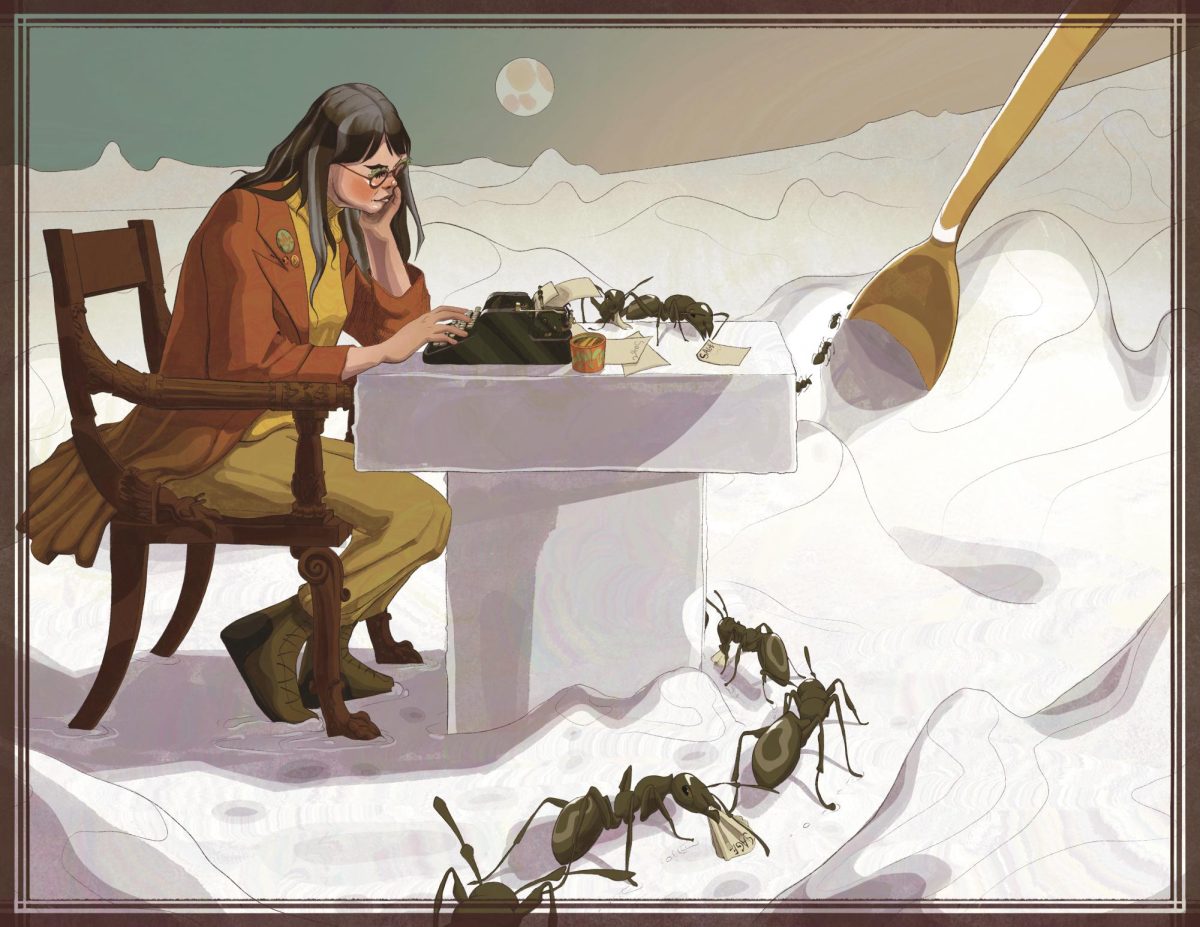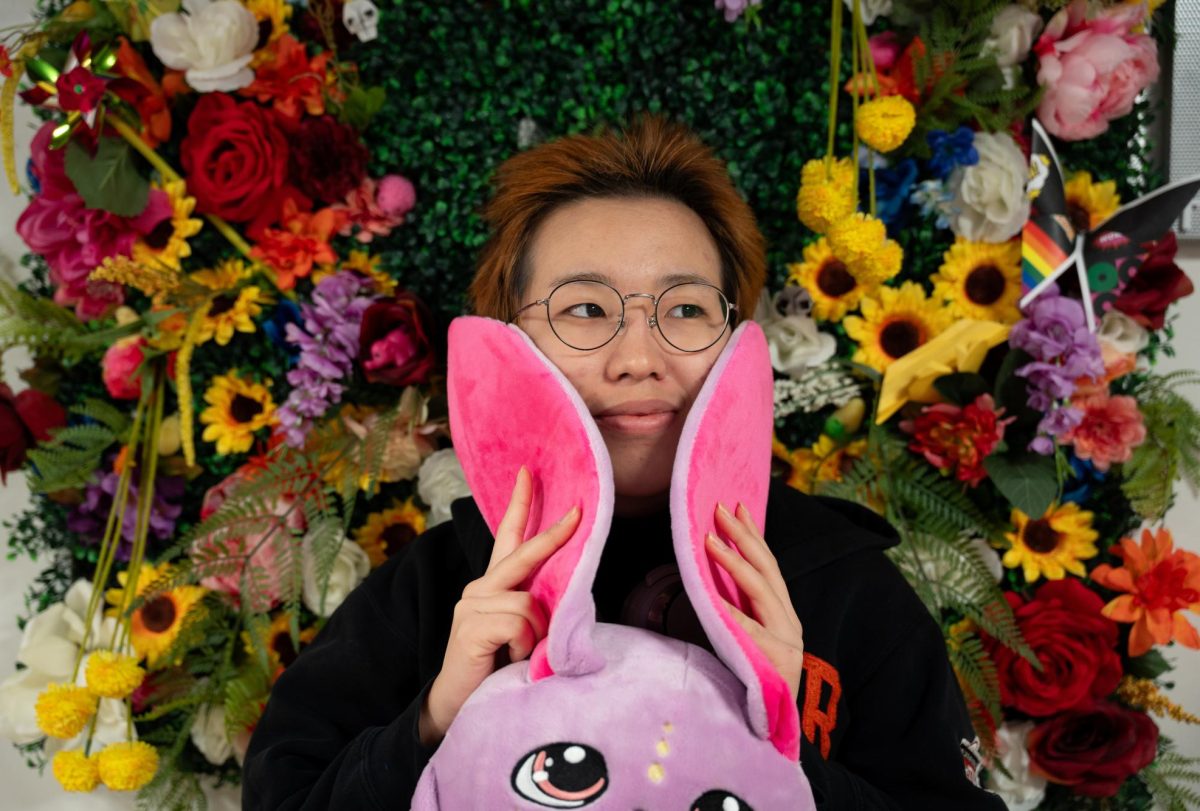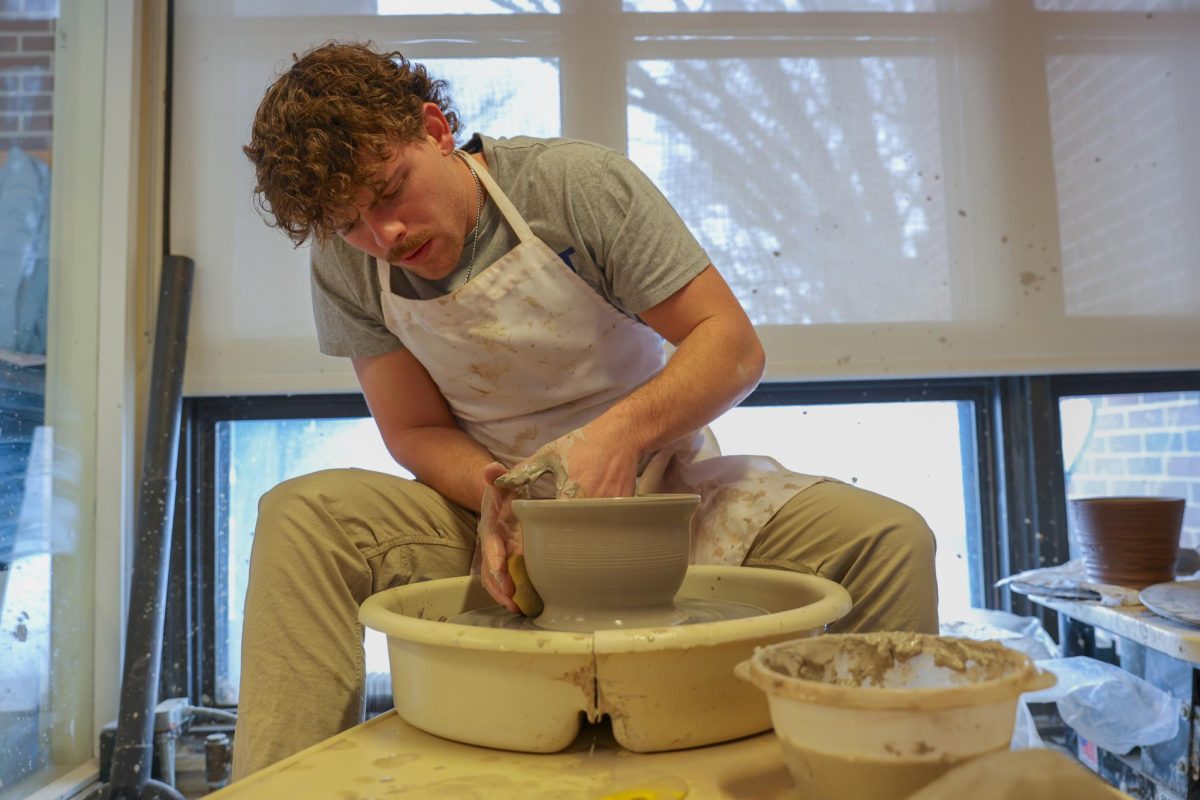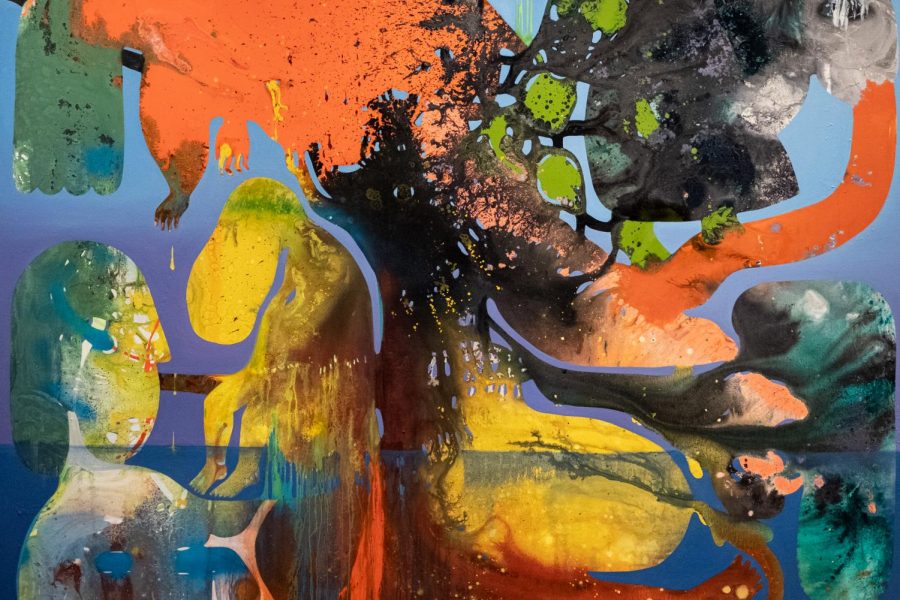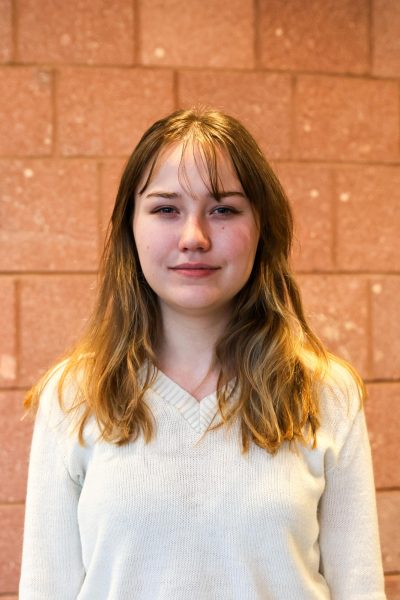Museum acquires four pieces by artist Vian Sora for permanent collection
“River Bed” by Vian Sora. Oil on canvas, 2022.
February 13, 2023
Vian Sora’s process of creation begins on the ground. The floor of her studio, covered in splotches of bright, messy paint, is representative of the first stage of her work: chaos. From there, she adds the details to what becomes her finished pieces.
The Grinnell College Museum of Art (GCMoA) acquired four pieces of Sora’s last summer for the museum’s permanent collection — “River Bed,” “Thirst,” “Eden I” and “Eden II.” Abstract artworks with suggestive, gestural figures and dominating colors of blue, red and green, Sora’s pieces depict themes of both water and hope.
Born in Baghdad, Iraq in 1976, Sora’s environment for the first three decades of her life has inevitably shaped her artwork. Witnessing multiple wars in her home country, Sora’s work commentates on destruction, decay and the rebirth that grows from it.
“I try to mimic an explosion scene,” said Sora, describing the act of starting a new piece. “This is what really informed at least the last five years of my life in Iraq and the thing that traumatized me most. And, I think the work over the years became a process of reversing these explosion scenes … it’s like reversing death, reversing terror.”
Sora said the labor of stripping elements from her work and then adding others back in is, in a way, a metaphor for working through the events in her life. “As much as I don’t want the work to be about my trauma, it’s definitely there. It’s processing through it in this way. I don’t think I would be painting this way if I was raised in a safe, perfect environment,” she said.
Sora moved to Louisville, Kentucky with her husband 13 years ago. She expressed how she believes her art has a stronger activist influence in the Appalachian region than it could in other places. “I feel like instead of being in a big city, where my impact would be minute, I feel like I have a bigger impact here. I have a voice that I bring that wouldn’t necessarily be able to have the same power to it,” she said.
After moving to Louisville, Sora obtained her master’s of business administration in 2012. She had previously graduated with a bachelor’s degree in computer science while still living in Iraq 12 years prior. Apart from a brief study of printmaking in Istanbul for a year, Sora is an entirely self-taught artist.
“I was never interested in studying art,” she said. “So, when the opportunity presented itself to me to study computer science, I thought that was more timely and needed. I was one of four women in, like, 200 men in that year. It was a moment of activism for me to study something that not many women have access to.”
Along with using her art to work through her past and promote social change, Sora explores contemporary issues in many of her recent pieces. “River Bed,” a large oil painting spanning 72 by 96 inches, was the result of 18 months of labor. Started in tandem with a number of other pieces titled collectively as “Floodgates,” which was Sora’s response to the COVID-19 pandemic, “River Bed” grew out of the prominent theme of water utilized in Sora’s work.
When she was halfway finished with the work, Sora spent three months in Berlin at an artist residency opportunity. On her way back to Kentucky, she witnessed the aftermath of the December 2021 tornado that ravaged the southern U.S. and Ohio River Valley. The contrast between Berlin, a city once decimated by war and bombings during World War II, and her new home, now plagued with destruction, reminded her of Iraq.
“Sadly, I learned how to finish this work,” Sora said. “This is kind of combining my own memory of witnessing car explosions and seeing body parts on trees and buildings. But, in this case, there is a more hopeful outcome of growth after death.”
Daniel Strong, associate director and curator of exhibitions at GCMoA, emphasized how important it is for students to study works like Sora’s. Sora’s work is a unique addition as the Museum has a limited amount of contemporary abstract pieces revolving around activism.
“I was kind of taken by it,” said Strong in reference to Sora’s work. “One of the reasons being that our collection is not historically strong in abstraction, particularly in women artists who work in abstraction … It’s something that we haven’t been able to teach very well from primary sources in the collection.”
Sora’s four pieces will join the vast body of work that composes the College’s permanent collection. Jocelyn Krueger, collections manager, estimates that in an average year the College acquires just under one hundred pieces for the collection, including portfolios or series counting as one piece. Vian Sora’s work will be on display in the permanent collection section of the museum until April 8.

